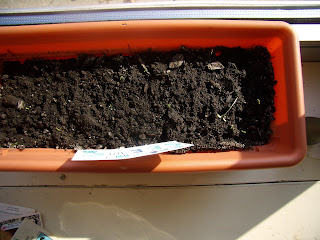We're very excited about a new experiment we're doing. Mrs. M. contacted NASA and they sent her some seeds that have been in space! So we are learning the scientific method while we see if going to space makes a difference for Cinnamon Basil seeds.
In 2007 about 10 million seeds were taken up in the space shuttle Endeavor. When they came back, NASA packaged them up and said classrooms could have them for experiments. We got 2 packets. When they sent the space seeds they also sent some earth seeds. They are the same kind of seeds, Cinnamon Basil, but they stayed on the Earth. We figured out that we got earth seeds so we could compare them to the space seeds to see if there is any difference. Mrs. M. told us that this is called a "control" since we know they should grow like they normally do.
So the first step of the scientific method is stating the question. Our question is "Does being in space change how cinnamon basil seeds grow?" The second step in the scientific method is forming a hypothesis. We learned that hypothesis means a very smart guess. We like this because it's supposed to be a guess and if we get it wrong, it's not a big deal because it was a guess to begin with. The purpose is to make us think and have an idea about what experiment to do to find out the answer to our question. We all made our own hypotheses. Some of us think there won't be any difference. Some of us do, like maybe the plants from the space seeds will grow taller or shorter or have different sized leaves.

The third step in the scientific method is perform the experiment. We wrote out what we planned to do. We planted the earth seeds in one planter and the space seeds in another planter and placed them both by the window for sunlight. We plan to take moisture readings every day we're in school and water if the soil measures a 1 or 2. On Fridays we will record our observations in our plant journals. We'll do this until Spring Break, so about 2 months.

When we planted the seeds we noticed right away that the seeds that had been in space were all dark while the ones that had stayed on earth had some dark and some light. Also the space seeds seemed to feel thicker than the ones that stayed on earth. We planted both in there own planters and made little signs for each so we'd not forget which was which. We can hardly wait to see what happens!























